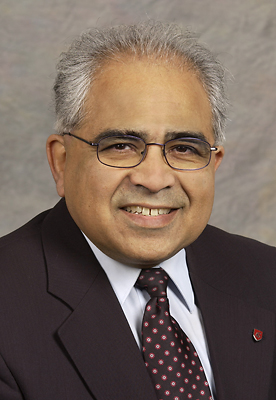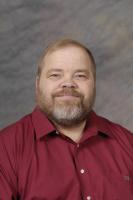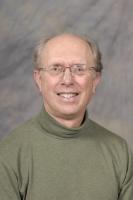People
Our team brings together two research groups that have innovated in power systems control, monitoring, and simulation and also in high assurance distributed computing, networking and cloud computing for more than two decades.
Kenneth P. Birman, Cornell University
Professor Ken Birman is the N. Rama Rao Professor of Computer Science at Cornell University, where he has worked in the field of distributed computing for nearly 30 years, after receiving his PhD from U.C. Berkeley in 1981. Birman is widely known for his work on the Isis Toolkit, which was ultimately commercialized and played central roles in the New York and Swiss Stock Exchanges, the US Navy AEGIS warship, and the French Air Traffic Control System, in each case by providing a self-diagnosing communications infrastructure to support fault-tolerant, consistent services. Birman has also worked with Cisco, Microsoft, IBM and other companies on core products in the cloud computing space. An author of 3 textbooks and more than 250 research papers, Birman has been given many of the field’s most important leadership roles, including that of Editor in Chief of ACM Transactions on Computer Systems and Program Committee Chair for ACM Symposium on Operating Systems Principles. Birman works closely with government agencies on a wide range of topics, and has assisted the Air Force, AFRL, AFOSR, NSF, Treasury, and the White House on studies of computing strategy, security, and cloud computing issues. He is a Fellow of the ACM and winner of the 2009 IEEE Tsukomo Kanai Award for his contributions to distributed computing.
Within the electric power research space, Professor Birman has worked as a team member on the PSERC consortium, exploring the real-world consequences of implementing grid control solutions on today’s Internet technologies, which have been accepted as standards for the field. We showed that even optimal SCADA and protective solutions often assume perfect data, arriving with perfect temporal properties, and that ideal solutions often place unrealistic synchronization expectations on the network and the actuators involved. One practical outcome of this work was a new simulation technology that combined two best of breed simulation tools, one for large multi-bus power systems and the second for fine-grain simulation of protocols such as the Internet TCP protocol. We demonstrated using this simulation that even when an event was correctly sensed and responded-to, delays in the TCP protocol could cause a sufficient degree of loss of synchronization that the correct intervention would actually exacerbate the original problem!
Anjan Bose, Washington State University
Dr. Anjan Bose has over 40 years of experience in industry and academia, as an engineer, educator and administrator. He is well known as a technical leader in the power grid control industry, a researcher in electric power engineering, an educator in engineering, and an administrator in higher education. He is a Member of the US National Academy of Engineering and has served on several NAE/NRC Committees. He is a founding member of the Washington State Academy of Sciences and is a Foreign Fellow of the Indian National Academy of Engineering. He is a Fellow of the IEEE and is active in several other international professional societies. He was the recipient of the Outstanding Power Engineering Educator Award (1994), the Third Millenium Medal (2000) and the Herman Halperin Electric Transmission & Distribution Award (2006), from the IEEE. He has been recognized as a distinguished alumnus of the Indian Institute of Technology, Kharagpur (2005) and the College of Engineering at Iowa State University (1993).
At Washington State University, Dr. Bose holds the title of Regents Professor and the endowed Distinguished Professorship in Power Engineering. He is also the Site Director of the NSF sponsored Power System Engineering Research Center (PSERC). In Fall 2005, he served as a Senior Advisor to the Federal Energy Regulatory Commission in Washington, DC on leave from the university. He served as the Dean of the College of Engineering and Architecture (1998-2005) and the Director of the School of Electrical Engineering and Computer Science (1993-98). Prior to that he worked in industry in several management positions and also as a faculty member at Arizona State University.
Prof. Bose is a pioneer in the area of power grid control centers where he originated many of the applications still used today for maintaining reliable operation. He is also the developer of the training simulator used to train grid operators around the world.
David Bakken, Washington State University
Professor David Bakken is a "system builder" who researches, develops, and evaluates infrastructure software. At WSU, he has worked closely with Prof. Anjan Bose on communications analysis and mechanisms for the power grid since 1999. As part of this, he has developed the GridStat publish-subscribe middleware, which has had a large influence on the NASPInet initiative. In his 12 years at WSU, he has visited many electric utilities and power meetings and also given technical presentations at a number of university research programs in electric power. He has given many briefings on power grid communications to research agencies such as DoE, DHS, NIST, and the European Commission including two invited keynotes at EC power+ICT meetings.
Before joining WSU, Bakken worked as a scientist for BBN, the company that built the ARPANET (the first internet) in 1969, in the distributed computing department. There he was a co-inventor of the Quality Objects (QuO) framework, higher-level middleware that added multiple QoS-like mechanisms along with policy and adaptation strategies to CORBA. QuO has flown in Boeing experimental aircraft and it was used to integrate 8 different QoS or adaptation mechanisms in demonstrations to the U.S. Navy. Dr. Bakken was lead PI on a successful QuO project, called AQuA from 1996-1999, in which he worked closely with Prof. Birman in adding adaptive fault-tolerance to QuO. Prior to graduate school, he worked as a programmer for Boeing. There, in 1987 he initiated, designed, and developed a suite of programming tools called Data_Flow, which was called a "major tool" by a Boeing engineer in 2001 and was still in use as of 2006.
Carl Hauser, Washington State University
Professor Carl Hauser is the WSU PI on the NSF-, DOE-, and DHS-funded TCIP/TCIPG trusted cyber infrastructure for the power grid centers, developing security approaches needed for widespread deployment of GridStat technology to monitor and control the power grid. Prior to joining WSU in 2001 he conducted research at IBM San Jose Research Lab (now Almaden Lab) and the Xerox Palo Alto Research Center (PARC) on programming language implementation, distributed filesystems, and distributed databases, with the latter resulting in the origination of the widely-cited “epidemic” approach to weakly-consistent distributed databases. In his last 5 years at PARC he managed IT support for the center, including replacement of the internal networking infrastructure and procurement of Internet and telecom services, as well as desktop and server support.
Robbert van Renesse, Cornell University
Dr. Robbert van Renesse was the principal developer of the Amoeba Distributed Operating System, commercialized by A.C.E. and used among others by the European Space Agency for monitoring experiments. At Bell Labs he helped develop the Plan 9 Operating System, now used in various commercial products as an embedded operating system and still a popular operating system for research. Van Renesse was the principal designer and developer of the Horus Group Communication System and the principal designer of the Ensemble Group Communication System on which the group communication system of the popular IBM WebSphere product is based. Van Renesse was the principal designer and developer of the Astrolabe peer-to-peer system that was deployed on a multi-continental platform at Amazon.com and connected tens of thousands of servers. At Microsoft and EMC he has helped with the design of cluster services, search engines, and other large scale distributed services. This work has led to 9 patents.






